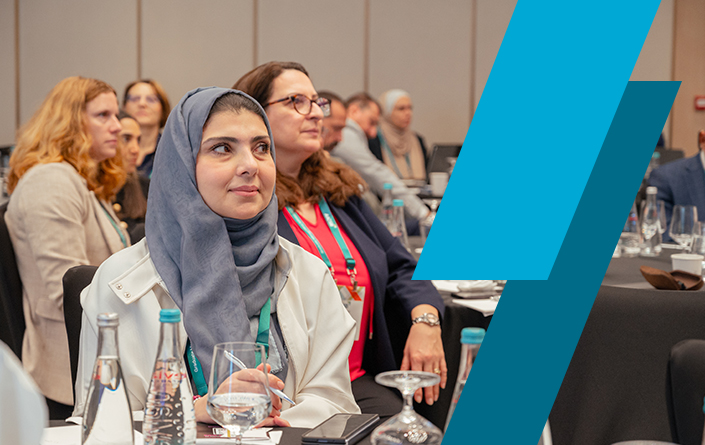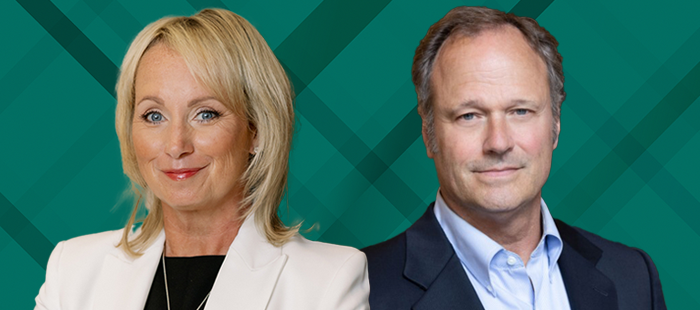Preparing Students to Be Active Changemakers
- Business is being reshaped by transitions that prioritize energy efficiency, planetary boundaries, and the circular economy.
- Especially in Europe, new rules about carbon emissions and new requirements for nonfinancial reporting mean businesses must consider how they are impacting the environment.
- Companies will rely more heavily on corporate social responsibility managers to unify disparate groups and create clear narratives for sustainability goals. These are roles that business graduates can fill.
How can business schools train students to become the drivers of a sustainable future? This is the question we have been asking ourselves at NEOMA Business School, which has locations in Reims, Rouen, and Paris, France.
For an answer, we have developed a new MSc in Sustainability Transformations, designed for managers responsible for corporate social responsibility (CSR) initiatives. Our program exposes students to three aspects of sustainability:
- The major transitions that businesses are facing today.
- The increasingly coercive regulations that create opportunities for sustainable innovation.
- The expanded role of CSR managers who must help companies find a middle way between catastrophism and denial.
We believe that when students understand these points, they will be able to help their organizations better differentiate themselves in a changing world.
Transformative Trends
Three important transitions are shaping the business environment today:
An emphasis on energy efficiency. To combat climate change, businesses are reducing greenhouse gas emissions, replacing carbon-based energies with low-carbon alternatives, and experimenting with new solutions. For instance, some organizations are turning to territorial symbiosis, in which companies optimize the potential of a particular area by pooling their resources or producing energy that others can reuse.
The move toward recognizing planetary limits. Companies are paying more attention to three issues: the scarcity of water; the collapse of biodiversity as pollutants poison the soil, water, and air; and the over-concretization of land due to urban sprawl and the deforestation of land for agricultural purposes.
The shift toward circular economies. To create a more sustainable economy, companies are designing eco-friendly products, recycling resources, designing new sustainable materials, replacing packaging materials, and recovering waste. As companies create more durable and expensive products, consumers purchase fewer new items and buy more reconditioned secondhand goods. New economic models such as subscriptions are also bringing to the fore the functional economy—that is, an economy that makes the best use of goods and services.
Today’s business environment is being shaped by an emphasis on energy efficiency, an understanding of planetary limits, and the shift toward circular economies.
The main difficulty with these three transitions is that they need to occur at the same time, but they require slightly different approaches. Therefore, it is essential that we help our students understand them properly. At NEOMA, we do this in part through reverse pedagogy, or flipped classrooms.
Students also participate in immersive learning experiences led by experts. These include science-based collaborative workshops dedicated to planetary boundaries, the circular economy, and digital sustainability transformations. We also introduce En Roads simulations focused on climate solutions and workshops exploring carbon-free horizons. These events help students both understand and make connections among the three transitions.
In addition, students learn to lead the 2Tonnes Workshop, in which teams explore how to transition to a low-carbon society, and they present these workshops to students on the various NEOMA campuses. This gives MSc students the opportunity to explain to a young and sometimes very misinformed audience the realities of the transitions and the types of individual or collective actions that can be taken.
A Raft of Regulations
While the rest of the world has just started to cope with these three transitions, Europe has taken the lead in embracing them. New regulations that will be implemented over the next few years will impose strong constraints on the international business ecosystem and drive all economic players toward adopting more virtuous behavior. These regulations are not all equally coercive, but together they will change the context in which companies carry out their strategic planning.
For example, the European Union is progressively instituting the carbon border adjustment mechanism, which adds a tax to imported goods that create high levels of carbon emissions; this ensures a fair price for European products that create lower emissions but cost more to produce. The new carbon adjustment mechanism replaces the free quota system, in which companies were allowed certain levels of carbon emissions and could “sell” whatever amounts they had not used. As Europe switches to the new system, companies inside and outside the EU will be obliged to decarbonize in order to maintain their margins. This will start with six main sectors.
At the same time, Europe is implementing a new taxonomy system, which classifies economic activities by which ones are most sustainable. Starting in January 2024, about 50,000 companies with more than 250 employees will have to participate in the taxonomy by publishing their percentage of turnover and investment in so-called sustainable activities.
In November 2023, the European Securities and Markets Authority studied a sample of 31 large companies that had already been subject to the system for the past two years. On average, their alignment with the taxonomy was just 15.3 percent, so there is plenty of room for improvement!
The taxonomy will provide financial bodies with a basis for comparison when it comes to financing one company over another, which will encourage them to invest in companies that favor one of the three transitions outlined above. Meanwhile, financial bodies also will have to comply with the sustainability disclosure obligations put forth by the Sustainable Finance Disclosure Regulation law that became mandatory in 2021.
In addition, businesses in the EU soon will feel the impacts of new nonfinancial reporting requirements, including the Corporate Sustainability Reporting Directive (CSRD), which just came into effect in January. It will gradually be extended to all 50,000 European companies that meet two of three criteria: They have more than 250 employees, 40 million EUR (about 43.5 million USD) in turnover, or 20 million EUR (21.7 million USD) in total on their balance sheets. These criteria are the same for the taxonomy system.
New regulations will impose strong constraints on the international business ecosystem and drive all economic players toward adopting more virtuous behavior.
The CSRD replaces the Non-Financial Reporting Directive, which applied to just over 11,000 companies in Europe. Because the CSRD covers five times as many firms, as well as foreign corporations bringing goods into Europe, it will profoundly change the nature of nonfinancial reporting by improving the quality, viability, and comparability of information.
The CSRD also has at least 100 times as many criteria—more than 1,200. These pertain to traditional issues such as human rights and governance, as well as new issues linked to the three transitions: pollution levels, energy mix, carbon footprint, water resource management, effects on biodiversity and ecosystems, proper usage of resources, waste management, and recycling efforts.
Previously, companies were free to choose to communicate on one criterion instead of another in their extra-financial reports. Gradually, this will no longer be possible. They will be obliged to carry out two parallel analyses of all their carbon emissions (scopes 1, 2, and 3) throughout their value chains. Through this parallel analysis, or double materiality, companies will examine how environmental and climate issues might pose financial risks for them and their value chains, and how their actions and the actions of their value chains might influence the environment.
Therefore, the introduction of the CSRD will have two effects that will create a strong vector for change. First, it will accentuate comparisons between companies, meaning some will be less highly rated than their competitors. Second, it will force companies to set targets and continually improve their sustainability efforts if they want to remain competitive.
Finding Meaning
At NEOMA, we know it is not enough to inform students about new regulations. We also must give these regulations meaning so our graduates see them as opportunities for transformation. Because the European business market is in the throes of change, our MSc in Sustainability Transformations places particular emphasis on the European dimension.
There’s another reason we emphasize the new regulations in our program: to reassure our students that progress is being made toward sustainability. A 2021 study by The Lancet Planetary Health, which surveyed 10,000 16-to-25-year-olds from 10 countries, showed that 59 percent are “very” or “extremely worried” about climate change. Fifty-six percent even think humanity is doomed.
We uncovered similar statistics when we had our MSc students survey other NEOMA students about their attitudes toward climate change. We found that some respondents disengage themselves from the question of climate change as a way to lessen anxiety.
We believe that when our MSc students learn about the regulations that are being implemented, they lose some of their eco-anxiety. Therefore, rather than emphasize a “problem-oriented” approach, we pursue “solution-oriented” discourse to give our students some perspective on how climate change can be effectively addressed. A similar approach is effective in companies whose employees are misinformed and sometimes confused by the contradictory injunctions related to the transition to a sustainable economy.
A Critical New Role
As transitions take place and regulations take hold, one of the most essential members of the leadership team will be the CSR manager who can bring together disparate groups and create a clear narrative for the company’s sustainability goals.
These skills will become especially important as new European directives force companies to take more collaborative approaches to diagnosing problems and pursuing continuous improvement. For instance, finance departments traditionally manage financial risks. But under the CSRD, they also will need to understand the risks their companies face due to factors such as the collapse of biodiversity. Statutory auditors and chartered accountants will need to validate sustainability reports, which means they will need to understand and talk about climate change. The result will be a profound transformation of all audit firms.
One of the most essential members of the leadership team will be the CSR manager who can bring together disparate groups and create a clear narrative for the company’s sustainability goals.
Because the CSRD redefines the notion of performance, companies will need much higher levels of internal and external collaboration. The most advanced companies are already setting up multidisciplinary project teams in which managers from supply chain, human resources, information systems, and marketing departments work together to diagnose situations and consider solutions. No corporate function or partner will be spared.
As a result, a CSR manager will become an orchestral conductor who leads the company’s sustainable transformation, bringing people together to diagnose sustainability challenges and reflect on appropriate solutions. This individual will show other executives how to apply sustainability criteria and uncover flaws in current business models. In short, the CSR manager will help the company create a vision, articulate a purpose, and drive change, while bringing the human element to the sustainability crisis.
To prepare students to take on such a role, we run a course in which they address specific issues with partner companies. During the first year of the MSc program, partners included BMW, EY, and Ferrero.
When working with EY, students explored CSRD issues and created a new type of mapping to help executives better understand what was at stake. At both EY and BMW, they helped address key concerns, such as how to communicate the company’s commitment to sustainability. Executives wanted to answer these questions: How do we engage our employees in transitions? How do we engage our external partners? How can we convey our values to our customers?
In this course, students work directly with companies to gather information, test proposals, and articulate solutions. These activities prepare them for the storytelling facet of their future careers as CSR managers.
The Path Forward
There is no more controversial subject today than sustainable development. For some, it’s a catastrophe because humanity is under threat; in their view, nothing will stop the devastating effects of climate change and the collapse of biodiversity. For others, it’s a catastrophe because the sustainable transition has led to too many standards; they believe that the rules that are being imposed are a threat to the global economy.
Our students are going to have to find a middle ground between doom-and-gloom and denial. They will need to build a narrative that appeals to all employees and partners—doomsayers and deniers alike.
Every company is unique, so every company will have to devise its own path forward. The choices it makes will depend on its sector, its history, its business model, its level of internationalization, its organization, and its culture. Our graduates must have the skills to help their organizations create optimistic visions for the future that will inspire stakeholders and lead to real action. Our hope is that our graduates become the changemakers who can deliver the effective, sustainable solutions the world needs.






